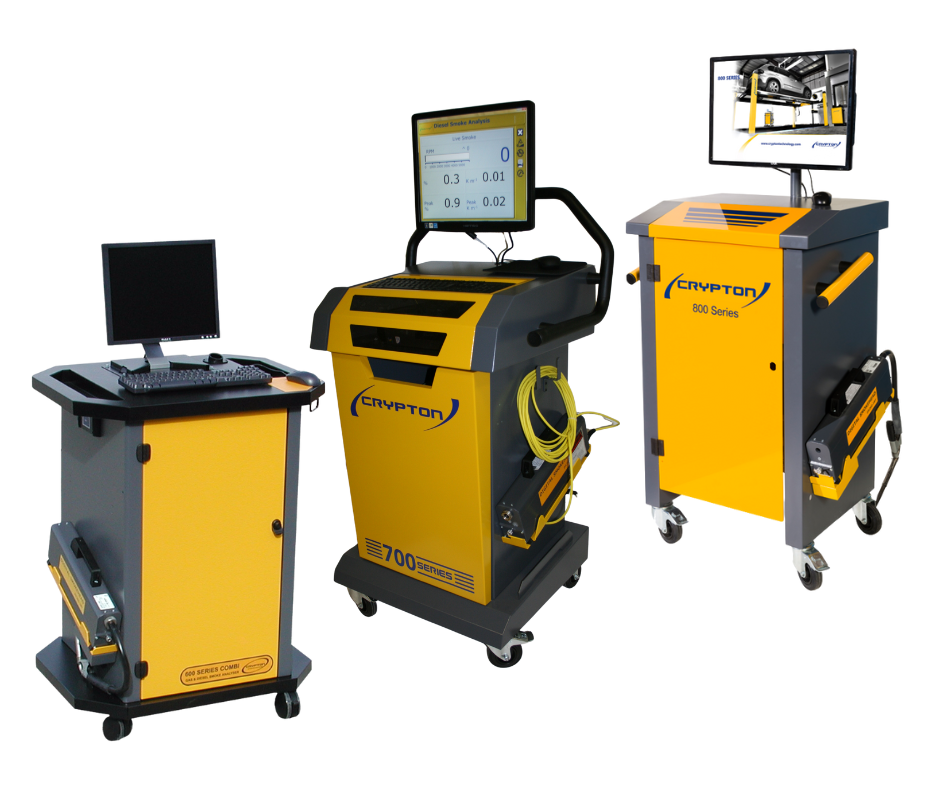

Newsroom
All the latest News
Newsroom
-
Attention Windows 10 Users: Important Changes
Is your emissions analyser up to date?

If your business still runs on Windows 10, here’s something you need to know — Microsoft officially ended support on October 14, 2025.
Now, your computer won’t suddenly stop working on that date, but there’s a serious downside: without regular security updates, your system becomes more vulnerable to viruses, malware, and data breaches. That’s a risk no business can afford to take.
Here’s how you can stay protected:
Option 1: Join Microsoft’s Extended Security Updates (ESU) Program
If you’re not ready to move away from Windows 10 just yet, this paid program provides an extra year of critical updates to keep your system protected a little longer.Option 2: Upgrade to Windows 11
If your current PC meets the hardware requirements, upgrading to Windows 11 ensures you stay fully supported with the latest features and security patches.Option 3: Invest in new equipment
This might be the perfect time to upgrade to a new emissions analyser or workstation built for Windows 11 — giving you faster performance, stronger protection, and long-term compatibility.⚠️ Important to note:
Not all existing systems will be compatible with Windows 11.
If you’re unsure, give our team a call — we’ll review your current setup and help you find the best solution for your business.📞 Call us today on 0121 725 1400
Let’s make sure your business stays secure, compliant, and ready for the future. -
Maximize Efficiency and Savings with an HGV Brake Testing
Maximize Efficiency and Savings with an HGV Brake Testing
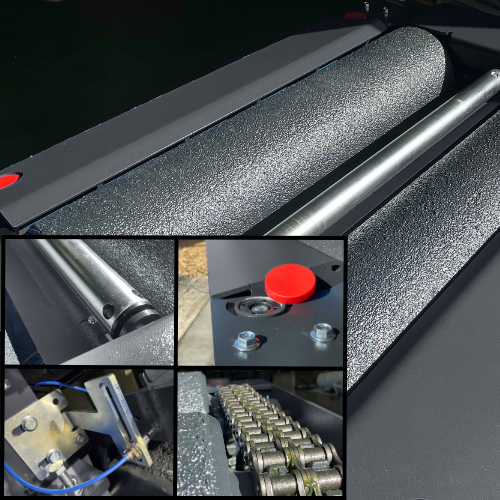
Introduction
Keeping your heavy goods vehicles (HGVs), coaches, and buses safe and on the road is paramount for any fleet operator or workshop. However, the traditional reliance on external brake testing services can be a significant drag on both your precious time and your budget. From scheduling hassles to accumulating testing fees and unavoidable vehicle downtime, the challenges are clear.
This article explores a smarter, more efficient solution: bringing commercial vehicle brake testing in-house. By owning your own HGV brake tester, you can take control, minimize operational disruptions, and unlock substantial financial savings. This strategic move isn't just about compliance; it's about transforming your fleet's efficiency and boosting your bottom line.
The Hidden Costs of Inadequate or Outsourced HGV Brake Testing
While external brake testing serves a purpose, the cumulative effect of relying solely on them can lead to significant, often underestimated, costs for your business.
- Time-Consuming Logistics: Scheduling appointments, coordinating vehicle movements, and the unavoidable transit time to and from external testing centres eat into valuable operational hours. This fragmented process can be a logistical nightmare, especially for larger fleets.
- Mounting Expenses: Regular testing fees, especially when multiplied across multiple vehicles and frequent checks, quickly add up. These recurring charges can become a substantial, ongoing drain on your maintenance budget.
- Reduced Vehicle Availability: Perhaps one of the most impactful costs is vehicle downtime. While your vehicles are at an external testing centre, it's not on the road earning revenue. This direct impact on productivity can severely hinder your fleet's overall efficiency and profitability.
- Delayed Problem Detection: Waiting for scheduled external tests means that minor brake issues might go undetected for longer, potentially escalating into more severe, expensive repairs down the line.
How In-House HGV Brake Testers Save You Time
Bringing your commercial vehicle brake testing in-house offers a tangible shift in efficiency, putting you in the driver's seat of your maintenance schedule.
- Faster Turnarounds: With your own brake tester, you can conduct tests on your schedule, at your convenience. This eliminates the need to wait for external appointments, drastically reducing vehicle downtime and getting your vehicles back into service quicker.
- Streamlined Processes: Modern brake testers, like the Crypton RBT1850, offer clear on-screen software instructions and user-friendly controls, making the testing process efficient and straightforward. Features like automatic calculations simplify operation and reduce manual input errors.
- Early Problem Detection: Regular, accessible in-house testing allows you to catch brake issues early. Identifying minor problems before they escalate into major failures means quicker, less extensive repairs, significantly cutting down on repair time.
- Flexible Operations: With features like automatic or manual testing modes and bi-directional rollers, you have the flexibility to tailor the test to your specific needs, further enhancing operational efficiency.
How In-House HGV Brake Testers Save You Money
The financial benefits of owning an HGV brake tester extend far beyond just avoiding external fees. It's a strategic investment that generates long-term savings and potential new revenue streams.
- Significant Cost Savings: By eliminating regular external testing fees and associated travel costs, you achieve direct and substantial savings. For example, the Crypton RBT1850 boasts a payback period from as little as 2 years (depending on fleet size), highlighting its long-term cost-effectiveness.
- Reduced Repair Costs: Early detection of brake issues, facilitated by regular in-house testing, prevents minor problems from escalating into costly major repairs. This preventative approach extends the lifespan of components and reduces the need for expensive emergency fixes.
- Maximized Vehicle Availability: Every hour an HGV is operational is an hour it's earning revenue. By minimizing downtime associated with external testing, you maximize your fleet's operational time, directly boosting productivity and profitability.
- Improved Safety and Compliance: Regular, accurate testing ensures your vehicles meet DVSA standards. This reduces the risk of costly fines, penalties, and the financial repercussions of unexpected breakdowns or accidents.
- Potential for New Revenue Streams: For workshops or larger fleet operators, owning an HGV brake tester like the Crypton RBT1850 opens up the opportunity to offer brake testing services to other fleets. This can create an additional income stream, significantly offsetting the initial investment in the equipment.
- Optimized Load Simulation (Optional Feature): With the optional electrohydraulic rising roller bed, you can simulate full or part load conditions. This ensures comprehensive testing, potentially preventing issues that might arise under loaded conditions, further reducing future repair costs and ensuring safety.
The Crypton RBT1850: Your Partner in Efficiency and Savings
Developed from deep knowledge and experience dating back to the 1980s, the Crypton RBT1850 CV Brake Tester is a robust and reliable solution designed specifically for Heavy Goods Vehicles (HGV), Coach, and Bus brake testing.
Key Features that Save You Time and Money:
- DVSA ATF Approved: Ensures full compliance for HGV and PSV periodic brake safety tests and checks.
- Heavy-Duty Performance: Features two high-performance 11kW motors and can handle a maximum drive-over and test load of 20,000kg per axle, built for continuous commercial use.
- Automated Precision: The 8-sensor axle weighing system integrated into the roller bed allows for automatic brake efficiency calculations, saving time and ensuring accuracy.
- Flexible Operation: Choose between automatic or manual testing modes, with bi-directional and reversible rollers as standard.
- Robust Construction: Heavy-duty rollers, stainless proximity sensors, covered weigh cells, and electronics protected within the control cabinet ensure durability and low maintenance.
- Safety Features: Includes a mechanical brake that locks rollers for safe vehicle entry/exit and exit assistance.
- Optional Load Simulation: The electrohydraulic rising roller bed (24-ton lifting capacity, 250mm rise) allows you to simulate loaded conditions, ensuring even more comprehensive testing without excessive ram pressure.
Conclusion
In an industry where time is money and safety is non-negotiable, owning an HGV brake tester like the Crypton RBT1850 is a strategic imperative. It's not merely a piece of equipment; it's an investment in the efficiency, safety, and profitability of your fleet or workshop.
By bringing brake testing in-house, you gain unparalleled control over your maintenance schedule, drastically reduce operational costs, maximize vehicle availability, and ensure the highest standards of compliance. Stop relying on external services that drain your resources.
Take control of your fleet's future. Contact us today to learn more about the Crypton RBT1850 and how it can empower your business to save time, save money, and achieve unparalleled efficiency.
-
Class 4 MOT Bay Requirements
A Guide for DVSA Compliance
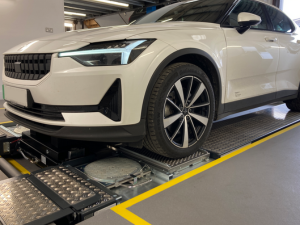
Setting up a Class 4 MOT Bay for testing cars, caravans, taxis, and passenger vehicles requires the right DVSA approved MOT equipment, layout, and trained staff to ensure your garage meets all legal standards.
A key part of every MOT testing station is the MOT bay, the designated space where testing and vehicle inspections take place. In this guide, we break down everything you need to run a compliant and efficient Class 4 MOT vehicle testing station.
What Is a Class 4 MOT Bay?
A Class 4 MOT Bay is the most common type of testing facility in the UK, used to inspect and certify standard vehicles such as:
Vehicle Type
MOT Class
First MOT Due
Cars (≤ 8 seats)
Class 4
3 years
Motor caravans
Class 4
3 years
Private hire/public service vehicles
Class 4
3 years
Taxis
Class 4
1 year
Passenger vehicles (9–12 seats)
Class 4
1 year
Light goods vehicles (≤ 3,000kg DGW)
Class 4
3 years
3-wheelers (over 450kg)
Class 4
3 years
What Equipment Is Required for a Class 4 MOT Bay?
To perform MOT tests on Class 4 vehicles, your garage must include DVSA approved MOT equipment, including:
Mandatory MOT Equipment for Class 4
✅ Vehicle lift (4-post or scissor) or inspection pit (inc. Jacking Beam)
✅ Wheel play detectors (shaker plates) (Included with ATL Lifts)
✅ Roller brake tester
✅ Diesel smoke meter
✅ Exhaust gas analyser
✅ Headlamp beam tester
✅ Brake pedal depressor
✅ Convex mirrors
✅ Ancillaries pack, includes small tools, Decelerometer & signage
MOT Testing Station IT Requirements
- Computer, laptop or tablet
- Internet connection
- Printer
- DVSA connected MOT equipment (mandatory for new stations or ownership changes)
Class 4 MOT Bay Dimensions & Layout
With a Vehicle Lift (Ramp)
Correct dimensions are essential to meet DVSA approval. Here’s a quick reference guide:
- Height clearance: 3800mm (measured 500mm around the lift sides, 500mm to the rear, and 1000mm in front of the drive-on)
- Overall bay width: 3600mm
- Entrance dimensions: Minimum 2400mm high × 2400mm wide
- Headroom over lift: 3800mm
- Brake test area: 2400mm wide × 9000mm long (Inc. Lift platforms in a recessed bay)
With an Inspection Pit
Where vertical space is limited, an inspection pit is a practical alternative. Key dimension requirements:
- Height clearance: 2400mm
- Overall bay width: 3600mm
- Entrance dimensions: Minimum 2400mm high × 2400mm wide
- Working Pit length: Minimum 3900mm
- Pit width: 760–920mm
- Pit depth: 1500–1800mm
- Brake test area: 2400mm × 9000mm (Inc. working pit length)
MOT Tester Training
Running an MOT centre also requires the right people with the right certifications:
- AEDM (Authorised Examiner Designated Manager): Oversees compliance
- Qualified MOT Tester: Must hold DVSA certification
- Annual MOT Tester Assessment: Mandatory between April and March each year
Why Invest in a Class 4 MOT Bay?
- 🔄 Test a wide range of vehicles
- 🔧 Expand your garage services without space heavy Class 7 setups
- 💼 Serve private, commercial, and fleet customers
- ✅ Future-proof your business with DVSA connected equipment
Final Thoughts
If you're planning to open or upgrade a Class 4 MOT Bay, it’s essential to follow DVSA guidelines for layout, equipment, personnel, and compliance. The right setup ensures safe, fast, and legal testing, keeping your customers and your business on the road.
-
Class 7 MOT Bay Requirements
A Guide for DVSA Compliance
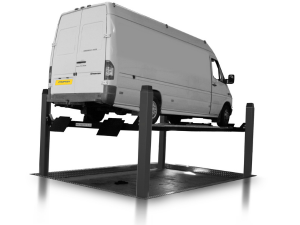
If you're setting up or upgrading a Class 7 MOT Bay for testing commercial vehicles, including large vans, trucks, and light goods vehicles, this guide will help you understand the exact MOT equipment, layout, training, and DVSA compliance needed.
Whether you're an established garage looking to expand your services or launching a new MOT testing station, having the right setup is essential for performing Class 7 MOT tests efficiently and legally.
What Is a Class 7 MOT Bay?
A Class 7 MOT Bay is designed for goods vehicles over 3,000kg and up to 3,500kg design gross weight (DGW). These include:
- Large vans (e.g., Ford Transit, Mercedes Sprinter)
- High-roof vehicles
- Light trucks and lorries
This MOT class ensures commercial vehicles are safe and roadworthy, as per DVSA regulations. A Class 7 Bay is ideal for garages looking to offer MOTs for both Class 4 and Class 7 vehicles, maximizing revenue potential.
Vehicles Covered by Class 7 MOT Tests
Vehicle Type
MOT Class
First MOT Due
Goods vehicles (3,000–3,500kg DGW)
Class 7
3 years
Cars, light vans (up to 3,000kg)
Class 4
3 years
Passenger vehicles (9+ seats)
Class 5/5a
1 year
Motorcycles
Class 1 & 2
3 years
Class 7 MOT Equipment List (DVSA Approved)
To operate a DVSA compliant Class 7 MOT testing station, your garage must be equipped with the following Class 7 MOT testing equipment:
Essential Class 7 MOT Equipment
✅ Vehicle lift (4-post or scissor) or inspection pit
✅ Wheel play detectors (shaker plates) (Included with ATL Lifts)
✅ Roller brake tester
✅ Diesel smoke meter
✅ Exhaust gas analyser
✅ Headlamp beam tester
✅ Brake pedal depressor
✅ Convex mirrors
✅ Ancillaries pack, includes small tools, Decelerometer & signage
MOT Testing Station IT Requirements
- Computer, laptop or tablet
- Internet connection
- Printer
- DVSA connected MOT equipment (mandatory for new stations or ownership changes)
Class 7 MOT Bay Dimensions & Layout
Correct dimensions are essential to meet DVSA approval. Here’s a quick reference guide:
With a Vehicle Lift
- Height clearance: 4800mm (measured 500mm around the lift sides, 500mm to the rear, and 1000mm in front of the drive-on)
- Bay width: 4200mm
- Vehicle entrance: Min. 3000mm wide × 3200mm high
- Brake test area: 3500mm × 14000mm (Inc. Lift platforms in a recessed bay)
With an Inspection Pit
- Height clearance: 3200mm
- Pit working length: ≥ 6000mm
- Pit width: 760–1300mm
- Pit depth: 1400–1800mm
MOT Tester Training
Running an MOT centre also requires the right people with the right certifications:
- AEDM (Authorised Examiner Designated Manager): Oversees compliance
- Qualified MOT Tester: Must hold DVSA certification
- Annual MOT Tester Assessment: Mandatory between April and March each year
Benefits of Installing a Class 7 MOT Bay
🔄 Test both Class 4 and Class 7 vehicles
💰 Increase revenue by expanding your service offering
🔧 Accommodate commercial fleets, couriers, and light goods vehicles
🚗 Future proof your business for vehicle demand
Class 4 vs Class 7 MOT Bay Comparison
Feature
Class 4 Bay
Class 7 Bay
Vehicle Weight Limit
≤ 3,000kg
3,001–3,500kg
Lift Capacity
Lower
5,000kg+
Ramp Length
Shorter
5.2m+
Bay Dimensions
Smaller
Larger
Vehicles Covered
Cars, small vans
Vans, lorries, trucks
Ready to Set Up Your Class 7 MOT Bay?
Whether you're building a new MOT bay or upgrading an existing one, it's critical to follow DVSA regulations, choose the right MOT equipment, and ensure your garage layout meets all required dimensions.
Need help choosing equipment or planning your bay layout? Contact our expert team for a free MOT Bay site visit and consultation.
Take the Next Step
📞 Contact Our Experts on 0121 725 1400 for an initial consultation and to arrange a free site survey.
-
MOT Bay Packages & Equipment
MOT Bay Packages & Equipment
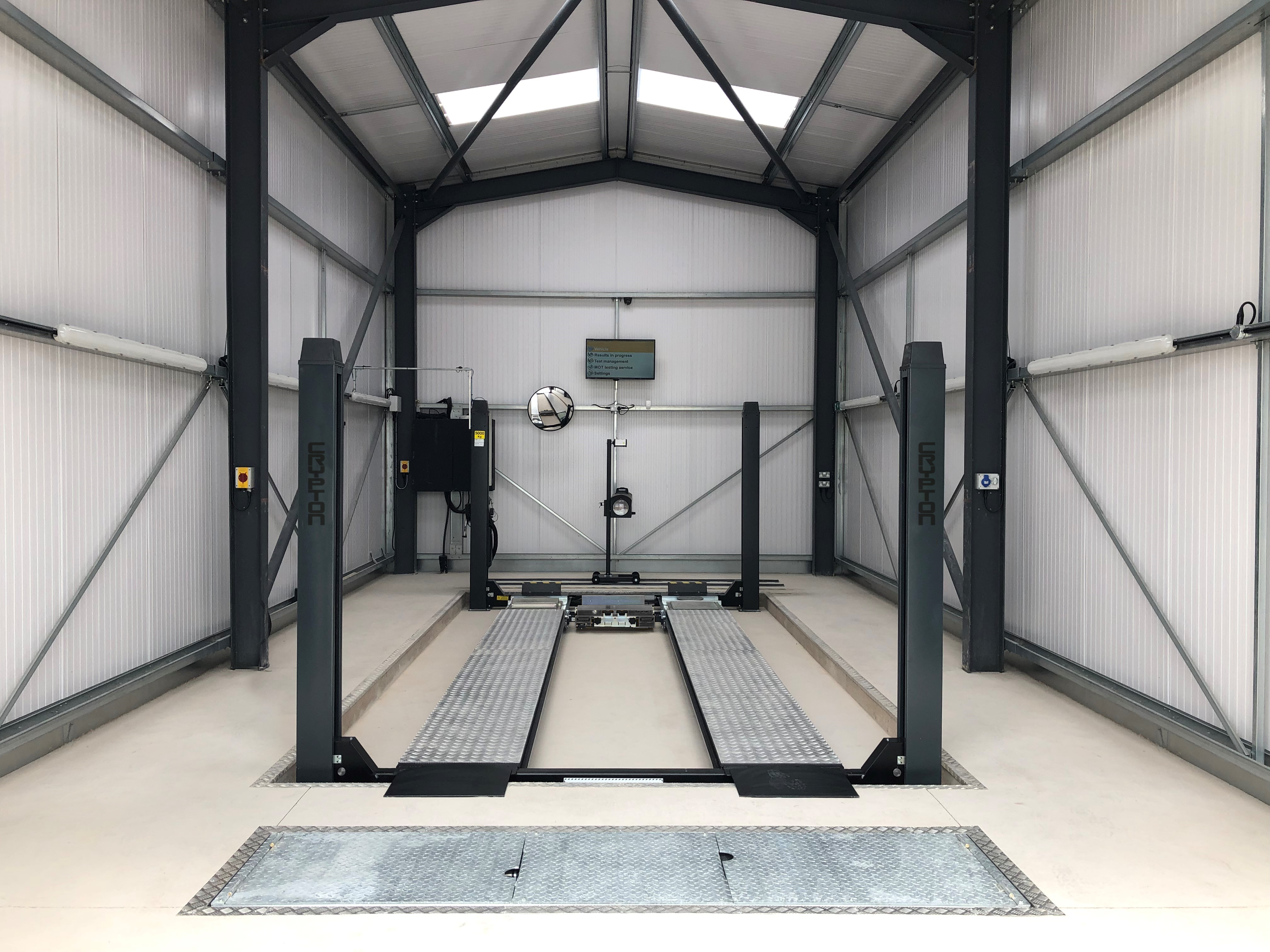
Investing in a dedicated MOT bay is one of the smartest moves a garage can make. More than just enabling MOT tests, it boosts revenue through repair work, improves operational efficiency, and builds long term customer trust by offering full-service capabilities in house.
What Is an MOT Bay?
An MOT bay is a purpose built testing area where DVSA authorised garages carry out MOT inspections on vehicles to ensure they meet road safety and environmental standards.
Installing an MOT bay in your garage allows you to:
- Earn direct income from MOT test fees
- Capture additional revenue from repair work
- Increase customer loyalty by offering a full-service solution
- Eliminate the need to outsource MOT testing
- Enhance your garage’s credibility
MOT Bay Types by Vehicle Class
Different MOT bays cater to different vehicle classes, choosing the right bay depends on your garage's location, space, and target customer base.
MOT Class
Vehicle Types
Garage Considerations
Class IV
Cars, taxis, minibuses (≤12 seats), vans up to 3,000kg DGW
Most common. Standard 4-post lift. 3.5–4T lift capacity
Class VII
Goods vehicles (3,001–3,500kg DGW)
Larger bays, stronger lifts, heavy duty brake testers
Class IV vs Class VII: What’s Right for Your Garage?
- Class IV MOT bays suit most general garages servicing private and light commercial vehicles.
- Class VII MOT bays are ideal for those targeting larger vans and light commercial fleets, requiring stronger lifts and expanded bay dimensions. You can still test class 4 vehicles with a class 7 MOT bay.
How to Set Up a DVSA-Approved MOT Bay
Step 1: Understand DVSA Requirements
Becoming an MOT testing station involves meeting strict DVSA standards and completing the VT01 application. You’ll need to appoint:
- An Authorised Examiner (AE) – the business entity
- An Authorised Examiner Designated Manager (AEDM) – trained person in charge of daily MOT operations.
Step 2: Assess Your Premises
Your workshop must meet MOT bay size requirements for the vehicle class you're testing. This includes:
- Minimum width, length & headroom clearance
- Specific entrance dimensions for vehicle access
- Space for equipment like lifts or pits, a reception/viewing area and adequate parking.
Lift vs Pit: Which is Better?
Feature
Lift
Inspection Pit
Overhead Clearance
Requires more headroom
Ideal for low ceiling workshops
Maintenance
Subject to LOLER inspections
Fewer moving parts
Cost
Lower install cost
Higher install cost but durable
Ideal For
Cars & vans
Commercial & heavy vehicles
MOT Bay Equipment List: What You’ll Need
All MOT testing equipment must be DVSA approved. A full list of DVSA approved equipment can be found on the Garage Equipment Association (GEA) website.
Core MOT Bay Equipment Includes:
- MOT Lift or Inspection Pit
- Roller Brake Tester (RBT)
- Emissions Analysers (gas and smoke)
- Headlamp Beam Tester
- Wheel Play Detectors (Shaker Plates)
Connected MOT Equipment
Connected Equipment is required for new or upgraded MOT bays, this transmits data directly to DVSA’s MOT Testing System (MTS). Connected equipment includes roller brake testers, emissions testers, and decelerometer.
Benefits of Choosing an MOT Bay Package
Rather than sourcing parts individually, many garages now opt for complete MOT bay packages from trusted suppliers.
Here's why:
✅ Expert MOT Bay Design
Get tailored advice on the best layout, equipment, and MOT class based on your premises, workflow, and budget.
✅ DVSA Application Support
Help with VT01 applications and provide CAD drawings, crucial for speedy approval, including part D site visit and sign off.
✅ Turnkey Installation
All equipment is installed, tested, and commissioned by professionals to meet DVSA standards on the same day.
✅ Full Equipment Compatibility
Seamless integration, avoiding setup issues.
✅ Staff Training
Get hands on training
✅ Ongoing Support
Scheduled maintenance, calibration, remote access & repairs.
✅ Cost Effective Bundles
Save money through bulk deals.
✅ Future Proof Solutions
Stay ahead of regulatory changes and tech trends, helping you adapt.
Ready to Invest in an MOT Bay?
Setting up a DVSA approved MOT bay is a strategic move that pays off in customer trust, efficiency, and long term revenue growth.
Whether you’re launching a new testing station or upgrading an existing garage, Crypton provides the tools, expertise, and support to make your MOT bay a success.
Take the Next Step
📞 Contact Our Experts on 0121 725 1400 for an initial consultation and to arrange a free site survey.
-
Brake Testers Can Save Time and Cut Costs
Brake Testers Can Save Time and Cut Costs

Take Charge of Your Fleet’s Safety and Efficiency
Running a fleet isn’t just about keeping vehicles moving, it’s about keeping them safe, compliant, and cost-effective. If you're still relying on third party services for brake testing, you're likely spending more time and money than you need to. Bringing this essential service in-house might seem like a big leap, but for many businesses, it's a game changer.
Why Outsourced Testing Holds You Back
Handing over your brake testing to an external provider can quickly become a logistical headache. Here’s why:
- Scheduling Friction: Booking appointments and coordinating drop offs disrupt your operations and burn valuable time.
- Cumulative Costs: Testing fees per can seem manageable at first, but they pile up fast.
- Lost Productivity: Every hour a vehicle is off the road for testing is an hour it’s not generating revenue.
The Case for In House Testing
Bringing brake testing under your own roof doesn’t just offer convenience, it opens the door to measurable improvements across the board.
- More Uptime: Test your vehicles when it suits you, not someone else’s schedule.
- Lower Operational Costs: Eliminate transport costs and reduce reliance on third party services.
- Enhanced Safety: Spot issues sooner with more frequent and consistent testing.
- Detailed Records: Maintain a reliable performance log for every vehicle in your fleet.
Timing Your Investment Wisely
For small operators or new businesses, outsourcing is often the practical choice early on. Investing in a brake tester involves more than just the upfront purchase, there’s calibration, maintenance, and training to consider. But as your fleet grows, there’s a tipping point where owning the equipment starts to make clear financial sense.
What determines when you hit that point? Several factors come into play:
- Fleet Size: The more vehicles you operate, the faster the return on investment.
- Testing Frequency: Frequent testing requirements push costs up, making in house options more appealing.
- Outsourcing Costs: High per test fees accelerate the break-even point.
- Equipment and Maintenance Costs: You'll need to factor in purchase price, upkeep, and calibration over time.
- Usage Potential: Will the tester serve just your fleet, or can it generate income by servicing others as well?
- Financing: Interest payments can extend your payback period if you’re not buying outright.
Making the Numbers Work
A well-informed decision begins with a proper cost benefit analysis. Project your testing needs over the next 3–10 years. Compare the total costs of outsourcing versus investing in equipment, and account for the time value of money.
It’s not all about dollars and cents either. Owning a brake tester gives you more control over your operations — and that flexibility can be just as valuable as the financial return.
Ready to Crunch the Numbers?
Start by collecting these key data points:
- How often you test your fleet
- Total number of vehicles
- Average round trip distance to your testing station
- Fuel cost per mile
- Cost per axle test
- Total number of axles
- Driver’s hourly rate
- Time spent per trip
- Expected Tests Subcontracted to 3rd Parties
Your Action Plan
Get the Numbers Together: Start by pulling together the real costs, what you're currently spending on outsourcing and what it might cost to bring things in-house.
Do the Math: Work out the full picture. How much would it cost over time? When would you break even? Need help? Reach out to your Crypton Sales Manager, they can walk you through the numbers.
Pressure Test Your Thinking: What if fuel prices spike? Or testing frequency changes? Explore a few "what if" scenarios. Your Crypton Sales Manager can help you make sense of the variables and how they might impact the outcome.
Make the Call: Look at both the numbers and the bigger picture, operations, efficiency, control. If it all adds up, it might be the right moment to take the next step.
Take control of your fleet's future. Contact us today on 0121 725 1400 to learn more about the Crypton RBT1850 and how it can empower your business to save time & money.
-
Crypton Brand Story
Crypton Brand Story
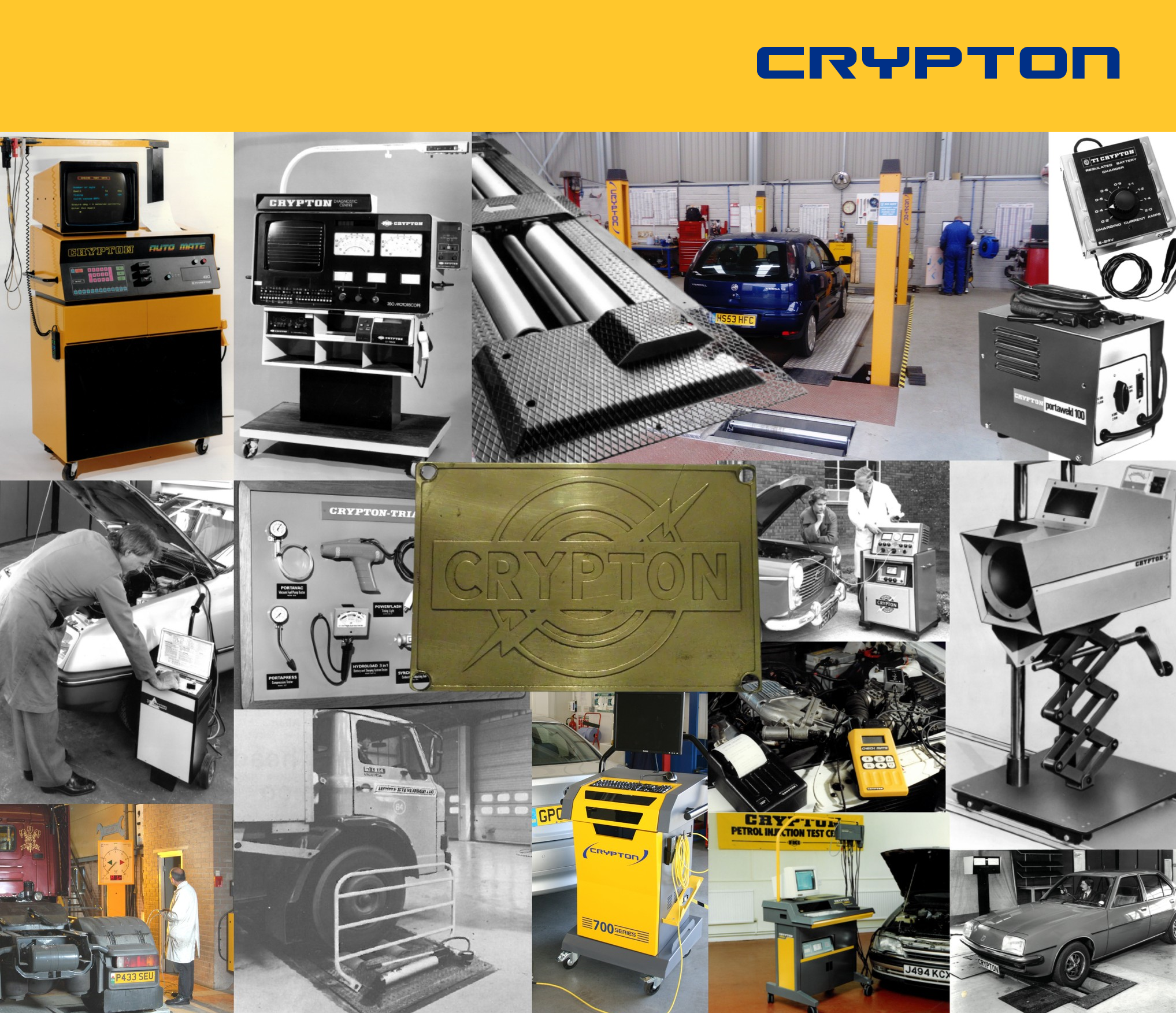
A Legacy of Precision, Driving the Future of Automotive Service
For generations, Crypton has been synonymous with precision and innovation in automotive equipment. Our story began in the early days of the motor industry, a time of rapid advancement and evolving needs. From our origins in manufacturing electrical motors and generators, we quickly recognized the critical need for accurate and reliable testing equipment.
In the 1930s, Crypton took a pioneering step, developing some of the world's first engine testers. This marked the beginning of our commitment to pushing the boundaries of technology and empowering automotive professionals with the tools they needed to excel. Through decades of relentless innovation, we've remained at the forefront of the industry, consistently anticipating and meeting the evolving demands of automotive service.
From pioneering "area testing" and the use of oscilloscopes in the 1950's, to the development of computer-controlled equipment in the 1960’s, and the modern digital and connected equipment of today, Crypton has consistently delivered products that set industry standards.
Today, as part of a larger family, Crypton continues to build upon its legacy of excellence. We understand the challenges faced by modern workshops, from the increasing complexity of vehicle technology to the ever-stricter regulatory requirements. That's why we're dedicated to providing our customers with cutting-edge equipment and unwavering support.
Our commitment extends beyond simply providing tools, we're dedicated to fostering a culture of precision, reliability, and trust. We empower automotive professionals to deliver exceptional service, ensuring vehicles are safe, efficient, and compliant.
At Crypton, we don't just build equipment, we build partnerships. We're driven by a passion for innovation and a dedication to helping our customers succeed.
-
Emissions Compliance and the Road Haulage Industry
Emissions Compliance and the Road Haulage Industry
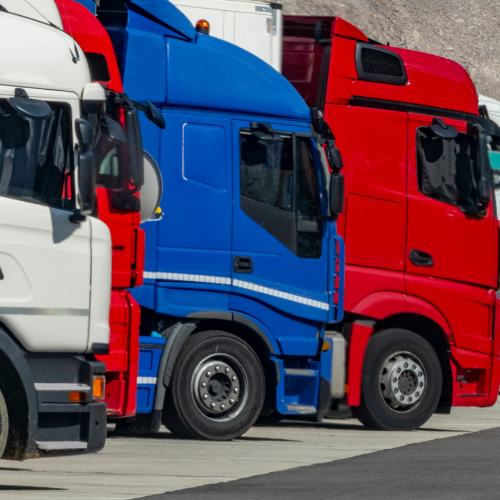
In light of the updated guidance by the DVSA in November 2024 we take a short look at emissions.
The road haulage industry is undergoing a significant shift, with increasing emphasis on environmental sustainability and emission control. DVSA are tightening the reins on emissions fraud, and new standards are being introduced to promote cleaner vehicles.
Why is Emission Control Important?
Excessive emissions contribute to air pollution, climate change, and public health issues. By adhering to emission standards, the haulage industry can not only ensure compliance but play a crucial role in reducing its environmental footprint, while building their brand reputation.
Key Compliance Requirements
- Adhere to the manufacturer's recommended maintenance schedule to optimise vehicle performance and minimise emissions.
- Drivers must conduct daily walkaround checks to ensure the vehicle is roadworthy. This includes visually inspecting the exhaust system for leaks or excessive smoke.
- Vehicles exhibiting excessive smoke should be tested with a diesel smokemeter to confirm compliance with legal limits.
Reporting and Enforcement Enforcement is only undertaken by the police or DVSA inspectors, however, the general public are able to report vehicles they believe are emitting excessive smoke to the DVSA.
Don’t get caught out, invest in your own CSP900 smokemeter and prioritise regular vehicle emission tests.
Call us today on 0121 725 1400
-
Back to Where We Belong – Crypton Returns
Back to Where We Belong – Crypton Returns

We’ve got some news we’re genuinely excited to share, our UK garage equipment business is going back to the Crypton name.
If you’ve been in the trade a while, you’ll know exactly what that means. Crypton has been part of the UK’s motoring story for generations, a brand that’s been there in the background of thousands of workshops, helping mechanics get the job done right. For many, that familiar crypton logo meant solid kit you could trust, day in and day out.
This isn’t just a new badge on the door. It’s us reconnecting with a brand that understands the way UK garages work, their pace, their challenges, and the standards they expect. By bringing together Crypton’s homegrown reputation with the wider knowledge and technical know-how, we’re setting ourselves up to deliver even more for the people who keep Britain’s cars on the road.
We’ll carry on doing what we’ve always aimed to do, provide equipment that works hard, lasts, and makes life easier in the workshop. The difference now is we get to do it with a name that already feels like part of the family.
It’s good to be back.
-
Dont Get Left in the MOT Slow Lane
Dont Get Left in the MOT Slow Lane
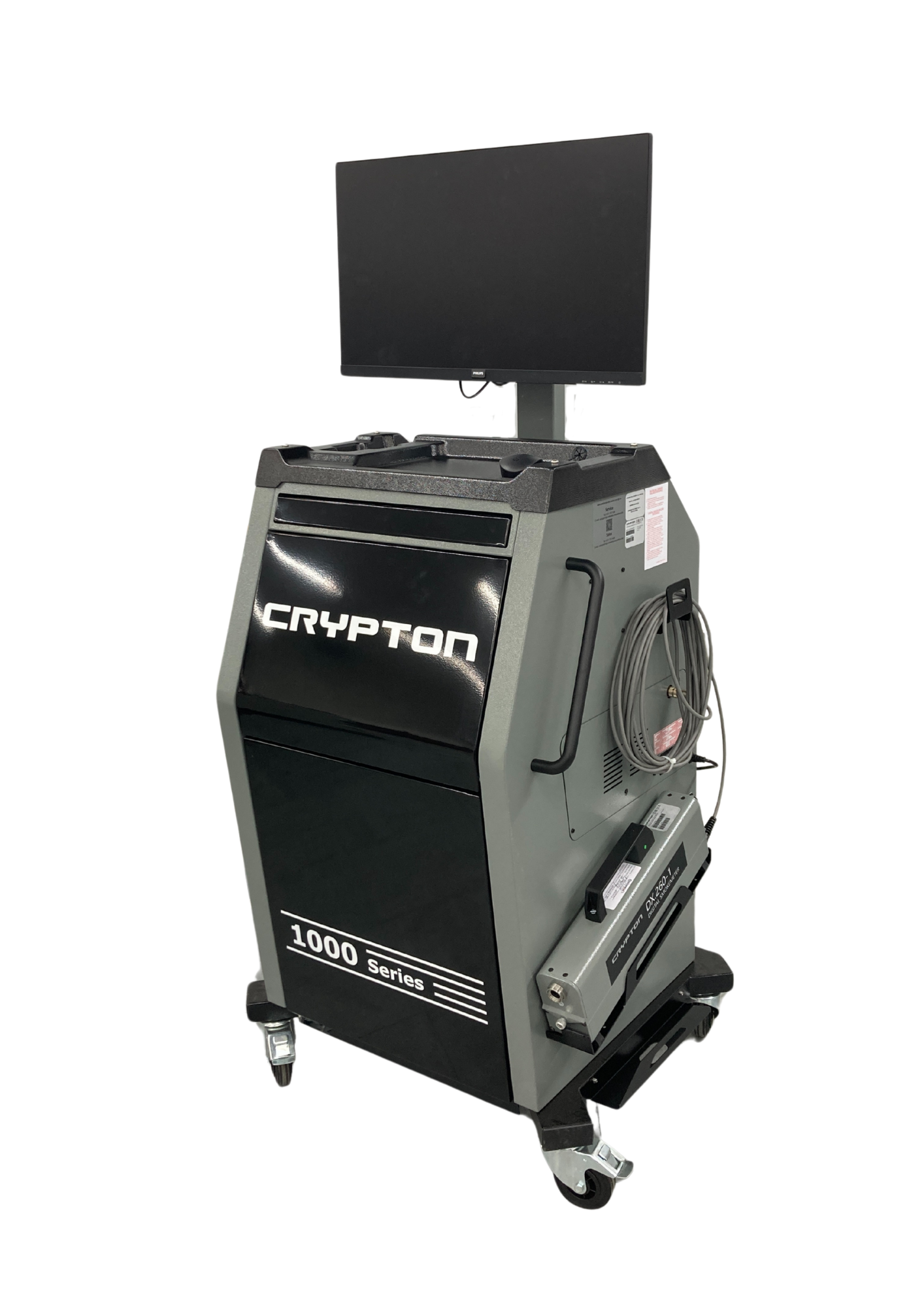
September’s MOT rush isn’t far away.
Ask yourself, can your garage handle the extra demand? Is your emissions tester up to the job?
Nothing slows a busy day like unreliable kit. It’s bad for your schedule, frustrating for customers, and can eat into your profits.
That’s why more garages are switching to the Continental CCP1000, fast, accurate, and built to keep things moving.
Here’s what it brings to the table:
-
Built to Last: A solid 3-year parts & Labour warranty for peace of mind.
-
Quick & Easy: Simple controls that make testing faster.
-
Ready to Work: Designed to fit seamlessly into your current setup.
When the MOT surge hits, you’ll be glad you made the change.
Get the CCP1000 now and keep your garage running like clockwork.
-
Call us today on 0121 725 1400